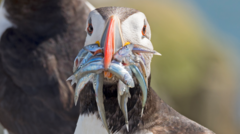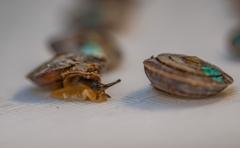Federal wildlife authorities proposed that monarch butterflies be recognized as a threatened species under federal law, which could make them the most frequently observed species under such protection. This move, however, must navigate complex challenges in conservation to effectively support the species without overwhelming public support.
Monarch Butterflies Proposed for Federal Protection amid Population Declines

Monarch Butterflies Proposed for Federal Protection amid Population Declines
Wildlife officials recommend listing monarch butterflies as a threatened species, balancing conservation efforts with public interests.
In a significant move toward protecting one of nature's most enchanting creatures, federal wildlife officials have proposed that monarch butterflies be classified as a threatened species. This decision, if enacted, could render the vibrant orange and black butterflies the most commonly seen species receiving such legal protection in the United States. Each year, these butterflies embark on a remarkable migration spanning thousands of miles and multiple generations, making them a beloved symbol of nature's resilience.
However, the proposal comes amid alarming population declines, highlighting the urgent need for intervention. Wildlife officials recognize the delicate balance they must strike: imposing too few regulations could result in a symbolic designation that fails to address the challenges facing monarchs, while overly stringent rules might discourage landowners from contributing to butterfly habitats due to potential liabilities.
Experts like Jake Li, leading the endangered species listing efforts at the U.S. Fish and Wildlife Service, emphasize the unique role of everyday people in aiding butterfly conservation. He advocates for constructive incentives to encourage habitat creation, ensuring that individuals feel supported rather than restricted in their conservation efforts.
Ultimately, the fate of this proposal rests with the new administration in Washington. During Donald J. Trump's presidency, officials acknowledged that monarch butterflies met criteria for the Endangered Species Act but were not prioritized for protection at that time. As ongoing discussions unfold, the outcome could prove pivotal not just for monarchs but for broader biodiversity conservation efforts across the nation.
However, the proposal comes amid alarming population declines, highlighting the urgent need for intervention. Wildlife officials recognize the delicate balance they must strike: imposing too few regulations could result in a symbolic designation that fails to address the challenges facing monarchs, while overly stringent rules might discourage landowners from contributing to butterfly habitats due to potential liabilities.
Experts like Jake Li, leading the endangered species listing efforts at the U.S. Fish and Wildlife Service, emphasize the unique role of everyday people in aiding butterfly conservation. He advocates for constructive incentives to encourage habitat creation, ensuring that individuals feel supported rather than restricted in their conservation efforts.
Ultimately, the fate of this proposal rests with the new administration in Washington. During Donald J. Trump's presidency, officials acknowledged that monarch butterflies met criteria for the Endangered Species Act but were not prioritized for protection at that time. As ongoing discussions unfold, the outcome could prove pivotal not just for monarchs but for broader biodiversity conservation efforts across the nation.




















